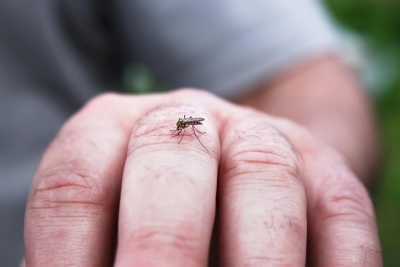What is dengue and what are its causes?

Hospitals in Haryana, Kerala, Punjab, Rajasthan, Tamil Nadu, Uttar Pradesh, Uttarakhand, Delhi, and Jammu and Kashmir are witnessing a surge in dengue cases with the number of cases reported exceeding one lakh. The Union health ministry has sent teams of experts to the nine States and Union Territories to support them in public health measures for control and management of the disease. What is dengue, what causes it, what are the symptoms to look out for, and how is it treated? Let's find out.
A mosquito-borne infection Dengue is a mosquito-borne viral infection that is transmitted to people through the bite of an infected Aedes aegypti mosquito. When a mosquito bites us, it not only sucks blood but also secretes saliva that enters our bloodstream. This is how an infected mosquito passes on the infection. Dengue is a seasonal disease which witnesses a surge in cases post-rain. Dengue virus causes fever and haemorrhagic symptoms.
Dengue infections are caused by four related viruses namely DEN-1, DEN-2, DEN-3, and DEN-4 belonging to the genus Flavivirus. These four viruses are called serotypes because each has different interactions with the antibodies in our blood serum. The four dengue virus serotypes mean it is possible to be infected more than once. In other words, being infected from one dengue virus does not guarantee protection from the other three. Once a person gets infected, he becomes the main carrier of the virus and passes it to uninfected mosquitoes. After recovery, he becomes immune to that particular serotype for lifetime.
Flying killers
Mosquitoes thrive in tropical regions. Dengue mosquitoes breed only in clear water. They lay eggs on the surface of the water which hatch in eight days (or even less in extremely warm weather).
Mosquitoes take refuge in dark spaces indoors and use puddles, tree holes, discarded vehicle tyres, and plant pots around homes to breed. If water is not allowed to stagnate, mosquitoes cannot multiply. Did you know that only female mosquitoes are capable of biting us? They feed on our blood to source protein for their eggs.
According to the World Health Organization, mosquito-borne diseases kill several million people worldwide, every year.
Dengue symptoms
Dengue causes a severe flu-like illness that may last up to a week. In some cases, the fever could be life-threatening, resulting in bleeding, a fall platelet count, and sometimes extremely low blood pressure. Dengue symptoms include high fever, severe headache, pain behind the eyes, nausea, vomiting, acute stomach ache, muscle and joint pain, and skin rash. They begin to manifest three to 14 days after the bite. The severity of the symptoms increases if the infection is not treated properly and in time. Seek medical advice immediately if you have a fever or develop any of the dengue symptoms.
At present, there are no vaccines for dengue or specific medications to treat it. Pain killers are prescribed for relief from symptoms. Drinking plenty of fluids and taking ample rest are also advised. So the best way to protect ourselves from dengue is to avoid mosquito bites by sleeping under the net using mosquito repellent, etc.
Picture Credit : Google
